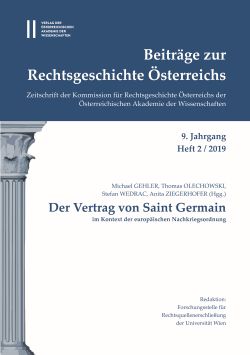
Beiträge zur Rechtsgeschichte Österreichs 9. Jahrgang Heft 2/2019, pp. 384-396, 2019/12/01
Der Vertrag von Saint Germain
im Kontext der europäischen Nachkriegsordnung
In the interwar period, Austria slipped twice into a heavy budget crisis: in the early 1920s due to the collapse of thecurrency; and at the beginning of the 1930s due to the effects of the Great Depression. Creditworthiness on the internationalcapital markets was no longer assured. In both cases, the Federal Government turned to the League of Nationsin search of help, whereupon individual League of Nations states assumed guarantees for the necessary governmentbonds. The bonds helped Austria out of its worst budget problems but were a burden on the domestic political climate.They were linked to a strict restructuring package with drastic social and economic consequences. The ban on territorialunification with Germany (Anschluss) laid down in the Treaty of Saint Germain was also confirmed. Thus, theso-called League of Nations loans not only represent a significant piece of economic and financial history, but alsoreflect burning socio-political questions of the interwar period, which can be roughly outlined with slogans such asideology, radicalization and authoritarianism.
Keywords: Austria – budget crisis – economic crisis – interwar period – League of Nations